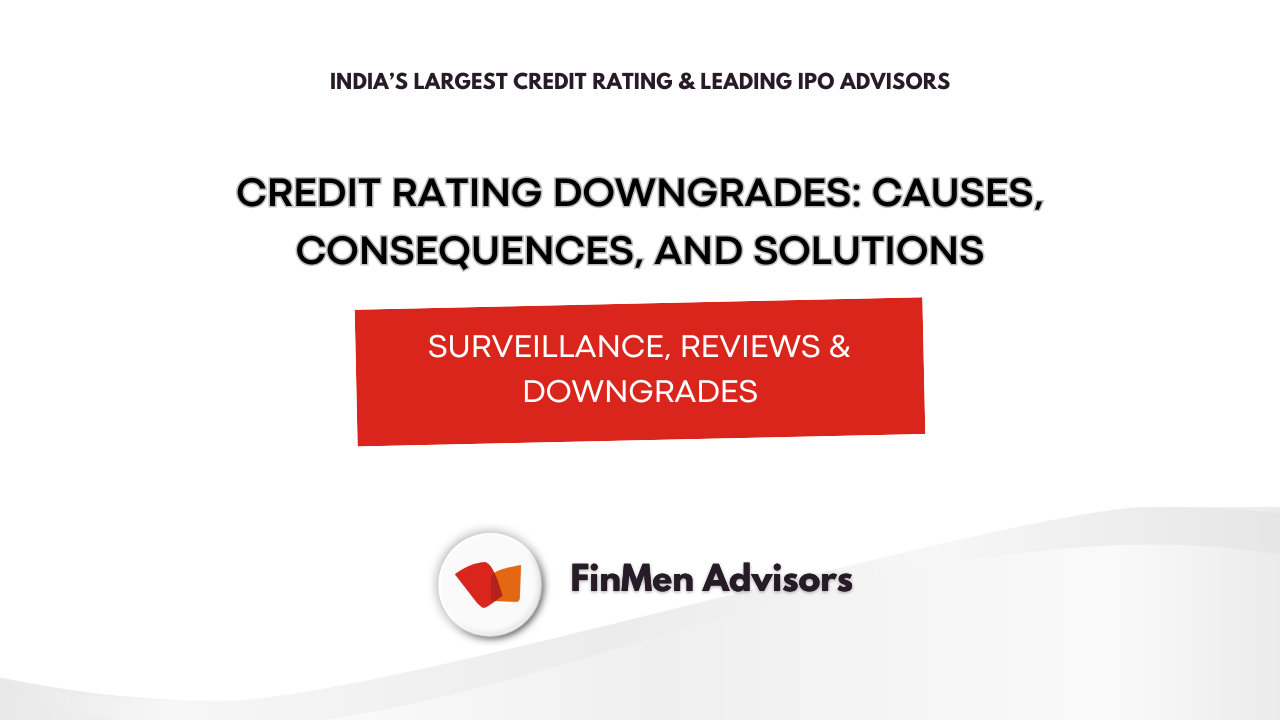In India’s financial ecosystem, credit ratings are more than just numbers—they are a reflection of a company’s credibility, governance, and ability to meet financial obligations. Investors, lenders, regulators, and business partners rely on these ratings to assess risk before engaging with a company.
A credit rating downgrade signals that a company’s perceived creditworthiness has deteriorated. Causes range from weakening financial performance and liquidity stress to governance lapses and adverse industry or macroeconomic changes. Downgrades can have immediate impacts, such as increased borrowing costs and market volatility, and longer-term effects on access to capital and corporate reputation.
However, downgrades can be managed and, in many cases, reversed with proactive strategies, transparent engagement with rating agencies, and structured remediation plans.
Understanding How Downgrades Happen
Rating agencies follow structured methodologies to assess credit risk, but ratings are ultimately forward-looking opinions based on available data. A typical downgrade process includes:
- Analyst Identification: Analysts flag potential risks through ongoing surveillance or specific events.
- CreditWatch/Outlook Change: Companies may first receive a watch or outlook revision signaling potential downgrade.
- Committee Review: Analysts prepare recommendations, which are reviewed and approved by rating committees.
- Rating Revision: A formal downgrade is issued along with a public rationale.
- Non-Cooperation Implications: If a company fails to provide timely information, agencies may apply conservative assumptions or withdraw the rating.
Common Causes of Credit Rating Downgrades
- Deteriorating Financial Metrics: Rising leverage, declining EBITDA, negative cash flows, and low interest coverage ratios.
- Liquidity Stress: Upcoming debt maturities with uncertain refinancing or frozen credit lines.
- Earnings Volatility: Margin compression due to input cost shocks or declining demand.
- Governance or Control Issues: Accounting irregularities, lack of audits, or management missteps.
- Macroeconomic & Sovereign Factors: Currency volatility, high interest rates, or sovereign downgrades.
- Industry-Specific Risks: Regulatory disruptions, technological changes, or sector downturns.
- Non-Cooperation / Disclosure Gaps: Companies failing to provide information are rated conservatively or may have ratings withdrawn.
Consequences of a Downgrade
Immediate Impacts
- Higher Borrowing Costs: Interest rates on loans and bonds often increase immediately.
- Covenant Triggers: Breaches can lead to margin step-ups, collateral demands, or accelerated repayment.
- Liquidity Pressure: Banks and lenders may tighten lines, affecting short-term financing.
- Market & Reputation Impact: Equity price drops, investor concerns, and reduced stakeholder confidence.
- Investor Restrictions: Mandates of institutional investors may limit their ability to hold downgraded instruments.
Medium-Term Impacts
- Reduced Market Access: Difficulty raising new debt or equity.
- Increased Cost of Capital: Long-term financing becomes more expensive.
- Strategic Disruption: M&A plans, capex, or growth projects may be delayed.
- Sector Contagion: Downgrades in one company can impact perception of related firms in the sector.
Solutions and Mitigation Strategies
Immediate Actions (First 24–72 Hours)
- Assemble a Crisis Team: CFO, Treasurer, Legal, Investor Relations, and CEO.
- Engage Rating Analysts: Share complete financial and operational data immediately.
- Secure Short-Term Liquidity: Draw on committed lines or bridge facilities.
- Communicate with Stakeholders: Inform lenders, investors, and key partners transparently.
- Freeze Non-Essential Capital Expenditure: Delay dividends, buybacks, and discretionary spending.
Medium-Term Measures (1–6 Months)
- Restructure debt, extend maturities, or negotiate covenant waivers.
- Raise committed liquidity and enhance cash reserves.
- Implement cost optimization and working capital improvement plans.
- Strengthen governance, audit, and disclosure practices.
Long-Term Recovery (6–24 Months)
- Deleverage and rebuild equity buffers.
- Maintain sustainable liquidity policies and committed credit lines.
- Engage in transparent reporting and regular analyst updates.
- Focus on high-margin and stable cash-flow business segments.
- Strengthen ESG and governance frameworks to improve rating credibility.
Best Practices to Avoid Future Downgrades
- Continuous Monitoring: Track early warning indicators such as debt ratios and liquidity metrics.
- Scenario & Stress Testing: Regularly assess vulnerabilities under adverse conditions.
- Maintain Adequate Liquidity: 12–18 months of committed liquidity is ideal.
- Strong Governance: Timely audits, independent board oversight, and robust internal controls.
- Proactive CRA Engagement: Treat rating agency interactions like regular investor relations.
Role of FinMen Advisors
As India’s largest Credit Rating Advisory and leading IPO Advisory firm, FinMen Advisors helps companies:
- Coordinate data submission and analyst engagement efficiently.
- Negotiate liquidity and covenant solutions with lenders.
- Design credit enhancement or restructuring solutions.
- Implement governance and disclosure improvements.
- Maintain continuous rating surveillance readiness.
By leveraging expertise and structured processes, FinMen Advisors ensures that a company’s rating reflects its true creditworthiness while minimizing the impact of adverse events.
Conclusion
A credit rating downgrade is not just a number—it is a strategic signal to the market. Companies that proactively address concerns, provide transparent information, and execute remedial actions can stabilize ratings, maintain investor confidence, and secure access to capital.
With expert guidance from FinMen Advisors, companies can manage downgrades effectively, protect their reputation, and ensure long-term financial growth.


